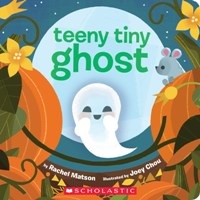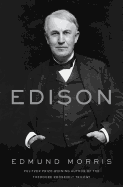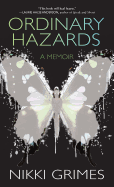 |
| photo: Theresa Kell |
Jeannie Vanasco is the author of the memoirs The Glass Eye and Things We Didn't Talk About When I Was a Girl (both published by Tin House Books). Her work has appeared in the Believer, the New York Times Modern Love column, Tin House and elsewhere. She lives in Baltimore, Md., and is an assistant professor at Towson University.
Both your books give the impression that you leave it all on the page, that Jeannie Vanasco the person is the same as the character.
A lot of memoirists talk about the character on the page as a persona. It's something I talk with my students about. It can be helpful to see oneself as a character. The idea is that people are capable of change, so the person who writes the book two, five years later might be very different from the character who experienced these events. With The Glass Eye, the meta sections were where I felt the distance between the writer and the character narrowed. I wanted that immediacy. With this book, I feel like more of my personality came through, maybe because there aren't isolated meta sections. The moments where we're inside my head run throughout the narrative. With The Glass Eye, I was sectioning off narratives and scenes, and then present-tense craft sections preceded each chapter.
I don't see the character on the page in this book as being different from who I am. Obviously it was deliberately crafted, and edited, and I wanted it to have that feel of immediacy, as if it were occurring in real time (and a lot of it was). But I think there was less of a persona with this book. And that's what was so scary about writing it.
Even without considering the subject matter, that does sound scary.
Absolutely. I approached it as an interesting intellectual exercise: I will examine the nuances of the language surrounding sexual assault. I went in with that very craft-y mindset, and then as I was working on it, I would be out somewhere and suddenly start crying. What's going on with me? I think it was because I was pushing away the emotions, intellectualizing. This book became a lot more emotional than I thought it would.
But it did give me control over the narrative, to see Mark as a character on the page. I came to see him as three different characters: the very close friend he'd been, and then the 19-year-old boy who carried me down into his basement room and raped me, and then the 34-year-old who felt, it seemed, remorse for what he did. What I realized in working on it is I wanted so badly to see the 34-year-old Mark and the teenaged Mark I'd been friends with as the same. And the guy who committed that act--he was a character, not the Mark I'm in conversation with. Having that craft perspective helped me work on it. But then I would have to remember that this happened to a real person, not a character. It happened to me. I think that's what made the book so difficult. Trying to have mastery over the material and then also being able to let go. To recognize that this is a messy thing that I'm writing about. It's difficult to find that balance between the writing of the book and the living of it.
What impact has writing the book had upon your mental health?
I think writing the book was therapeutic. It's interesting because as a student of nonfiction writing, I was told this is not therapy, what we're doing, it's not therapeutic, as if it makes something not artistic to even think about it in those terms. I do think this gave me some, maybe not resolution, but what happened doesn't obsess me the way it did. I used to have nightmares. I definitely feel like I can talk about it in a way that I didn't think I could before.
Part of the reason I wanted to talk to Mark is that women are so rarely believed. I wanted him on record. Because when I was on tour for The Glass Eye, I was occasionally asked, "How do you know that what happened really happened?" Because I write about psychosis. That became a little frustrating. I understand where the question was coming from, but I was feeling very much dismissed as a narrator. Part of the reason for the meta-ness in that first book is to show that I get that concern; but are any of us really reliable narrators? So I wanted to preempt that, because if I have him on record then hopefully I won't get those questions, how do you know it happened this way, because I'd have him admitting to it. I'm sure there will be some questions that may be upsetting, but I'm not sure they'll be questions I haven't already asked myself.
 There is that self-referential quality, that meta-ness, to both your books.
There is that self-referential quality, that meta-ness, to both your books.
For so long I was afraid to tell. Thinking of the balance between showing and telling, I knew that telling was important. I feel that to just show can lead to a tonally cold narrative. You need some of that intimacy of telling. The meta-ness helped me feel more comfortable outside of writing scenes. This is such a difficult subject, and I didn't even know all my thoughts and feelings. I really need to think on the page.
With nonfiction, I think sometimes people are resistant to that self-referential meta-layering. I think of meta-ness as just telling. Because unless you're doing something really experimental, you're not trying to pull one over on the reader, trying to get the reader to forget that you exist. So it doesn't seem to be really risky with nonfiction, because of course the reader knows I'm working on this book. To pretend that that process isn't a part of writing this book seems artificial.
The Glass Eye arose out of a promise to write a book. So writing the book seemed relevant to the plot. And with this book, the book's very existence was a huge part of reaching out to Mark. And so that meta-ness made sense. There were other ways I could have done it, but it would have felt artificial to me to try to avoid acknowledging the existence of the book. So I think given the starting points of both these books, it made sense to weave in the process of writing them.
Women seem the most obvious readers of this book, but it feels like one men need. What audience do you have in mind?
I would love it if men and boys would read this book. With The Glass Eye, the readers I would most often hear from were women in their early 20s who would tell me, "I love The Bell Jar and Girl, Interrupted and this book," and I was like, okay. Twenty-something sensitive bookish women undergraduates? That's my audience. But I am hoping this reaches a male audience. Recently I was on a plane going to a book festival, and I was seated next to this couple. And he saw that I had a pen and a notebook open and he said "Oh, are you a poet? You're staring off very thoughtfully!" And I said, "No, I write nonfiction." And I thought, I know the perfect way to shut down this conversation. I'll tell him about the second book. And he got really engaged--they both did. We were talking, they were asking me questions, and then at some point he said [referring to his partner], "She's really into #metoo." And he's not? It's interesting. I think some men see themselves as outside thinking about the #metoo movement or feminism, that they don't fully see themselves as playing an active role. So I'm hoping that men will read this and think about the way they should be more active. To think about their own past experiences, and looking the other way when a friend of theirs makes a sexist joke. As if these things don't matter. --Julia Kastner, librarian and blogger at pagesofjulia
Jeannie Vanasco: As if Those Things Don't Matter
 Rachel Matson and Joey Chou's Teeny Tiny Ghost (Cartwheel Books, $5.99) brings pre-readers into "the teeny tiny barn/ of a teeny tiny house" where two creatures live: "a teeny tiny ghost/ and a teeny tiny mouse." The teeny tiny mouse goes about its mousy business; the teeny tiny ghost works up the nerve to "cause alarm." (It turns out that teeny tiny ghosts aren't all that scary but they do make great friends.)
Rachel Matson and Joey Chou's Teeny Tiny Ghost (Cartwheel Books, $5.99) brings pre-readers into "the teeny tiny barn/ of a teeny tiny house" where two creatures live: "a teeny tiny ghost/ and a teeny tiny mouse." The teeny tiny mouse goes about its mousy business; the teeny tiny ghost works up the nerve to "cause alarm." (It turns out that teeny tiny ghosts aren't all that scary but they do make great friends.) In Are You My Monster? by Amanda Noll, illustrated by Howard McWilliam (Flashlight Press, $8.99, ages 0-3), a boy draws the monster he wishes lived under his bed. The monster is green and brown and has "sharp teeth, scratchy claws, and a long tail." One by one, creatively concocted, not-too-scary monsters audition for the role. When none fit all the criteria (allowing for toddlers learning colors and shapes to judge the monsters along with the boy), the young artist worries he'll never find his monster.
In Are You My Monster? by Amanda Noll, illustrated by Howard McWilliam (Flashlight Press, $8.99, ages 0-3), a boy draws the monster he wishes lived under his bed. The monster is green and brown and has "sharp teeth, scratchy claws, and a long tail." One by one, creatively concocted, not-too-scary monsters audition for the role. When none fit all the criteria (allowing for toddlers learning colors and shapes to judge the monsters along with the boy), the young artist worries he'll never find his monster. Children knock on themed lift-the-flap doors in Monsters Come Out Tonight! by Frederick Glasser, illustrated by Edward Miller (Abrams Appleseed, $8.99, ages 3-5), inviting ghosts, witches, mummies and other monsters to join them at the Monster Ball.
Children knock on themed lift-the-flap doors in Monsters Come Out Tonight! by Frederick Glasser, illustrated by Edward Miller (Abrams Appleseed, $8.99, ages 3-5), inviting ghosts, witches, mummies and other monsters to join them at the Monster Ball. Finally, if you know a little reader who really wants some trickery, caretakers can turn to Peek-a-Bruce by Ryan T. Higgins (Disney-Hyperion, $7.99) for children ages zero to three. The cantankerous bear, Bruce, tries to hide from his friends--in a tree, behind some rocks, under the water in a bubble bath--but the tiny geese find him everywhere. It's up to readers to decide who is doing the tricking in this amusing board book.
Finally, if you know a little reader who really wants some trickery, caretakers can turn to Peek-a-Bruce by Ryan T. Higgins (Disney-Hyperion, $7.99) for children ages zero to three. The cantankerous bear, Bruce, tries to hide from his friends--in a tree, behind some rocks, under the water in a bubble bath--but the tiny geese find him everywhere. It's up to readers to decide who is doing the tricking in this amusing board book. 



 There is that self-referential quality, that meta-ness, to both your books.
There is that self-referential quality, that meta-ness, to both your books.  Music journalist, biographer, poet and novelist Nick Tosches died October 20 at age 69. His eclectic career began as a 19-year-old with an article published in Fusion magazine. He went on to write for Creem and Rolling Stone and was the reviews editor for Country Music magazine. Tosches is often cited alongside Lester Bangs and Richard Meltzer as writers whose work on rock and roll elevated the field of music journalism. Later, he was a contributing editor with Vanity Fair and appeared in Esquire and Open City. In 1977, Tosches published his first book, Country: The Biggest Music in America. He followed that up with Hellfire (1982), a biography of Jerry Lee Lewis, and Unsung Heroes of Rock 'n' Roll: The Birth of Rock in the Wild Years Before Elvis (1984).
Music journalist, biographer, poet and novelist Nick Tosches died October 20 at age 69. His eclectic career began as a 19-year-old with an article published in Fusion magazine. He went on to write for Creem and Rolling Stone and was the reviews editor for Country Music magazine. Tosches is often cited alongside Lester Bangs and Richard Meltzer as writers whose work on rock and roll elevated the field of music journalism. Later, he was a contributing editor with Vanity Fair and appeared in Esquire and Open City. In 1977, Tosches published his first book, Country: The Biggest Music in America. He followed that up with Hellfire (1982), a biography of Jerry Lee Lewis, and Unsung Heroes of Rock 'n' Roll: The Birth of Rock in the Wild Years Before Elvis (1984).










